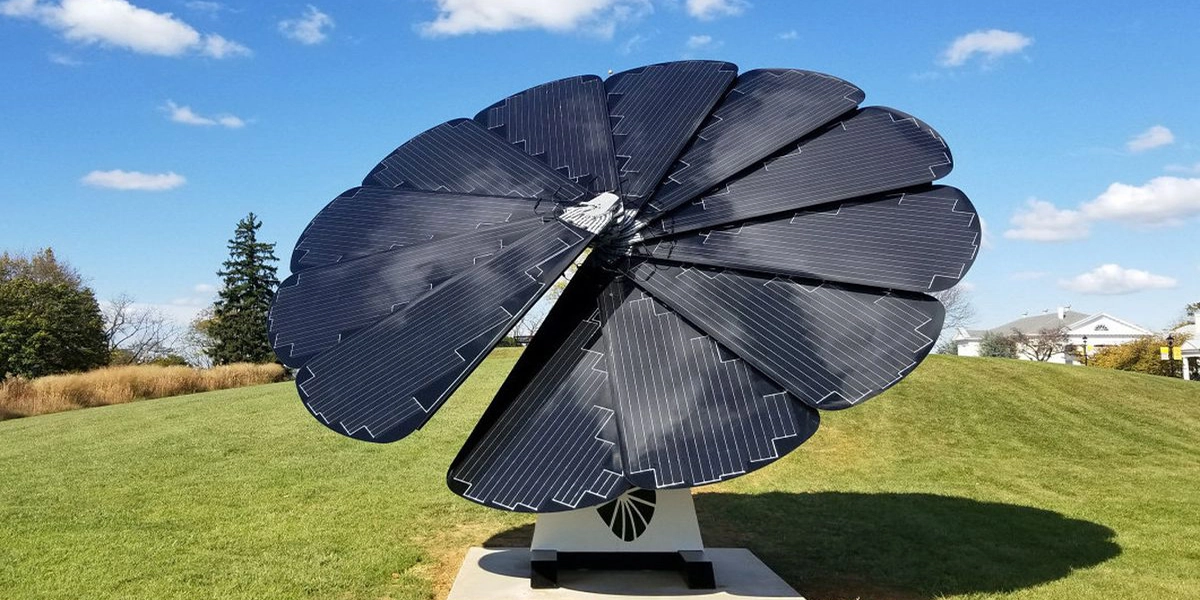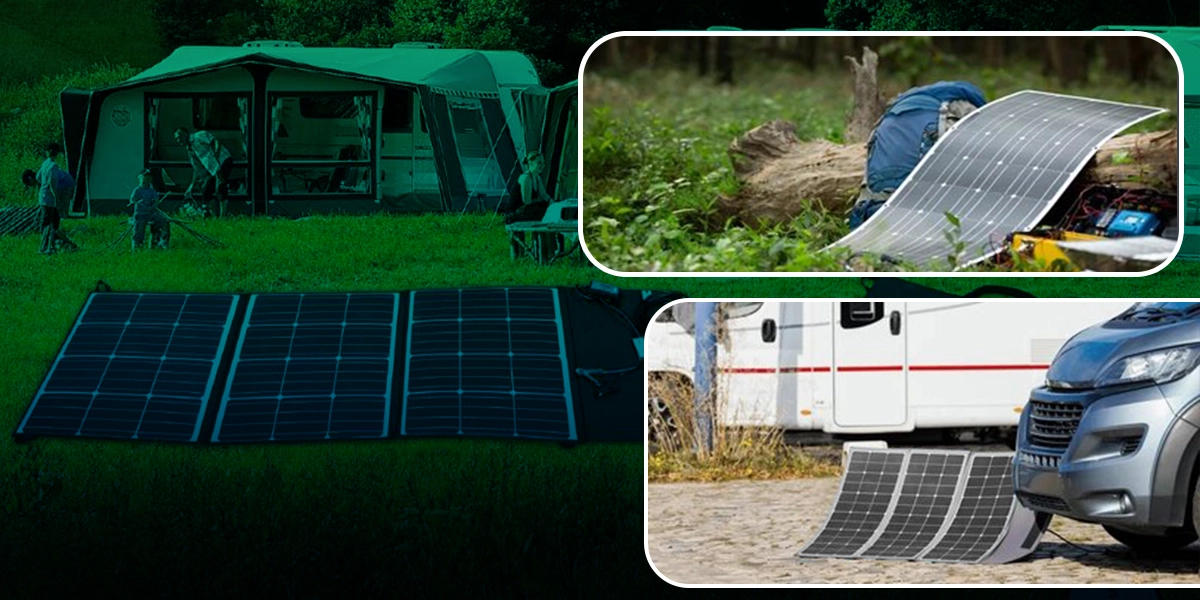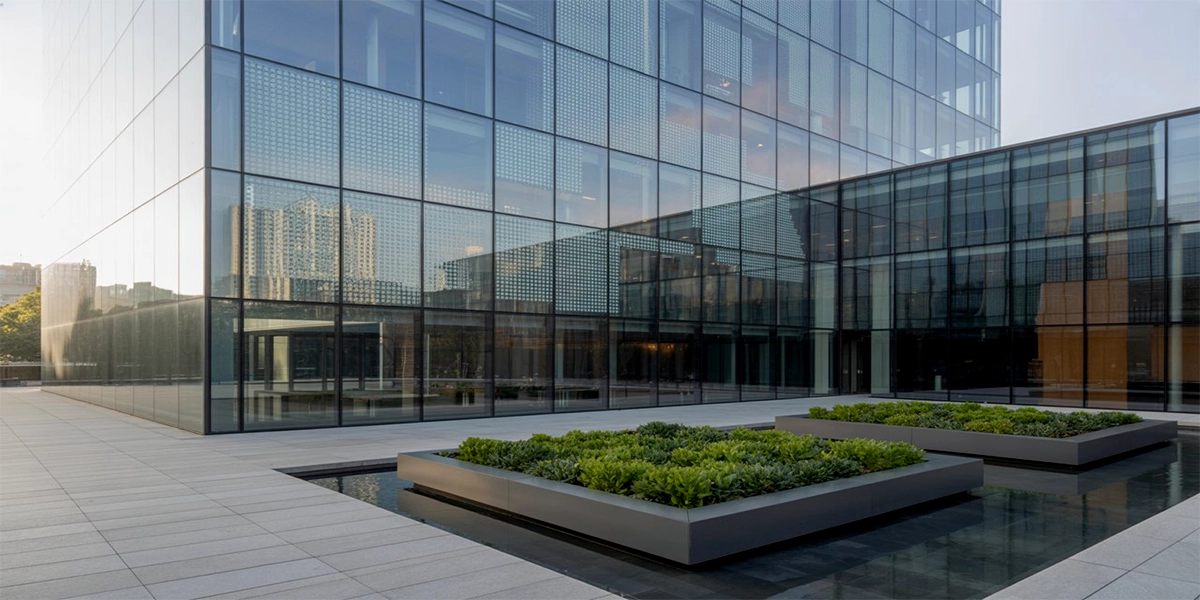- Updated On: July 02, 2025
Solar Blinds: Modern Window Treatments & Space-Saving Energy Solution
With the green living and smart living trend, it has never been more exciting to look for ways of integrating technology into home essentials on a daily basis. Solar blinds are becoming a home technology game-changer. Window blinds not only control sunlight but also collect sunlight, converting natural light into clean energy from your windows. Solar blinds are ideal for anyone who wants to maximize energy efficiency without sacrificing style or space. Solar window treatments offer a stylish and valuable solution for condos, offices, and homes with no large rooftops. You can lower your electricity bills and attain a contemporary, eco-chic style for your house. As sustainability takes center stage in residential design, solar panel blinds are gaining popularity among the style-conscious public.
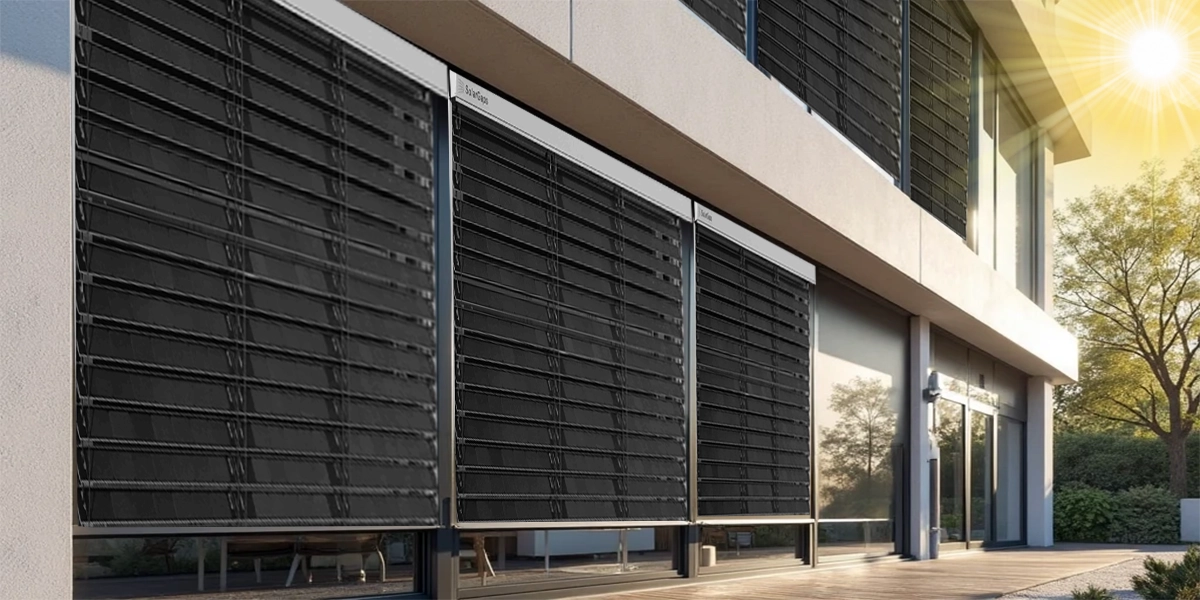
In this article, we will explore how they work, what the benefits of installing solar blinds are, and what to consider before choosing them.
What are solar blinds?
Solar panel blinds are window treatments that contain thin-film photovoltaic (PV) solar cells. The solar cells capture sunlight coming through your windows and transform it into electricity. You can use this power to light up your home or office appliances. Unlike traditional solar panels, which require roof or ground space, these solar panel blinds integrate solar technology into the window blinds system. They work like ordinary blinds with the ability to control light and privacy but with the generation of clean, renewable energy. The solar cells are also thin and lightweight. Also, they don’t alter your windows’ look while doing a dual function like keeping out sunlight and generating energy.
How do smart solar blinds work?
Similar to rooftop arrays and solar roof tiles, the photovoltaic systems in the blinds absorb solar energy to generate electricity. They use solar power and transform it into direct current (DC) electricity. In the typical home, however, the DC power is unusable. For this reason, alternating current (AC) is generated from electric power through the solar inverter.
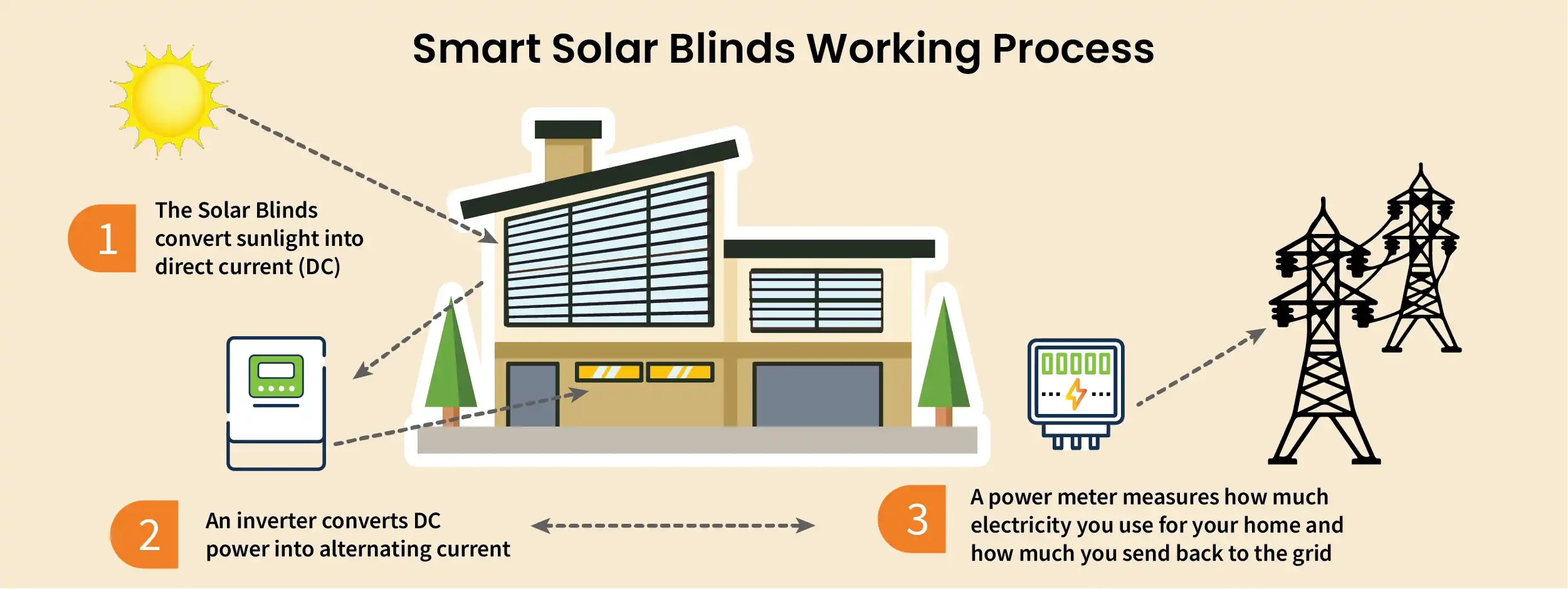
Also, they are on-grid PV systems. Using a two-way meter, you can either sell the excess energy to your electricity provider via net metering. You can also store power in a solar battery for later use.
How much energy can solar blinds generate?
The amount of energy that solar blinds generate depends on building design, weather, and location. For instance, 1 m² of solar panel blinds will produce up to 100 W per hour, which can power a laptop, mobile phone, or thirty LED bulbs. An average-sized window (2 m²), however, will produce more than 1 kWh in a day.
Also, sunflowers’ sun-tracking properties are used in the design of smart solar blinds. This means that for capturing and generating the maximum solar electricity, solar shades will get aligned automatically based on the angle of the sun’s rays.
What are the advantages of solar blinds?
Photovoltaic blinds are becoming very popular in solar smart homes nowadays. The best thing is that the blinds can fit into any home style and design due to customization. So, either in your house or workplace, blinds can go very well with any decoration. Moreover, some smart blinds upgrade security and prevent break-ins in your home.
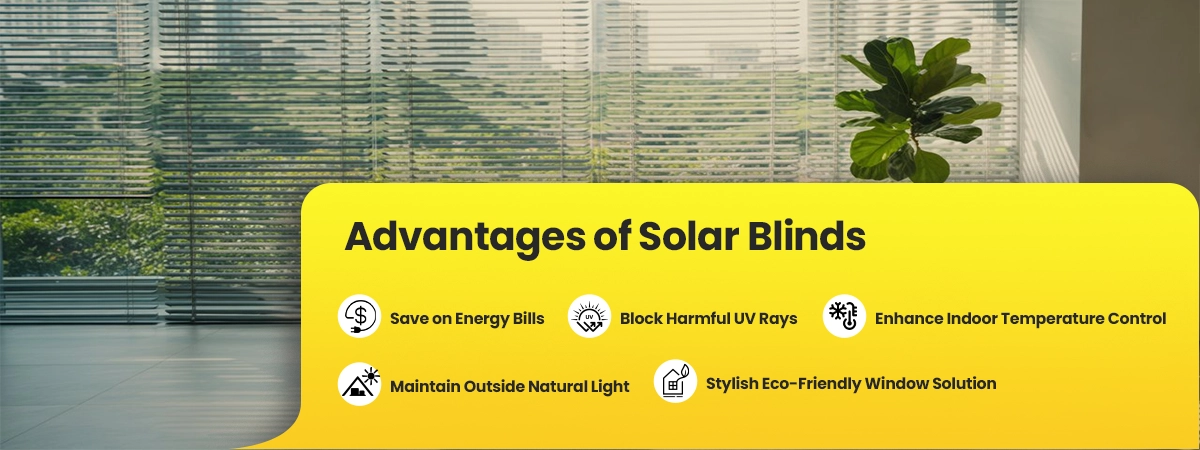
What are the factors to consider before installing solar panel blinds?
Before installing solar panel shades, there are several factors to consider to ensure that they are the right fit for your home. Here are some factors:
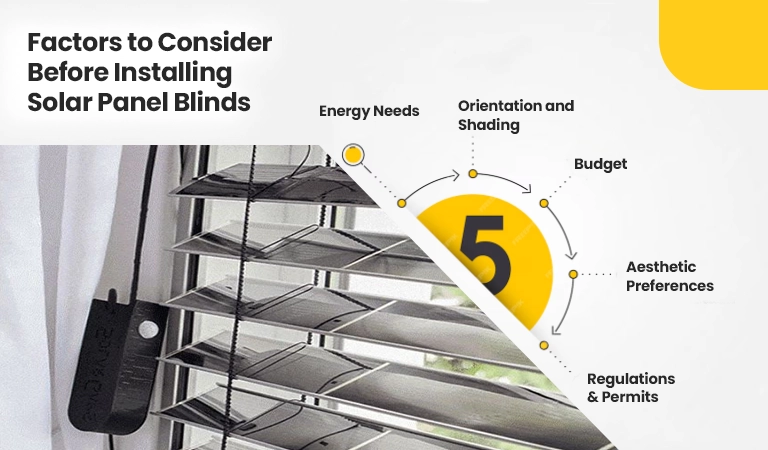
You need to calculate your energy consumption to determine the number of smart solar blinds. Consider the number of electrical appliances in your house, your average monthly energy consumption, and the changes in your future energy consumption.
The orientation and shading of your windows will impact the sunlight that can be captured by solar window blinds. South-facing windows receive the most sunlight throughout the day, making them the ideal choice for maximum energy production. However, east- and west-facing windows can also be suitable depending on the shade they receive.
Determine your budget for solar blinds based on installation cost, the number of blinds you require, and additional features and level of customization. You need to balance affordability with quality to get the most value out of your investment.
You should also consider how the solar windows will fit into your home’s aesthetic and ambiance. Choose a style and color that will complement your existing decor and improve the overall look of your space.
Also, you need to check with your local authorities or HOA to see if there are any rules or permits that you must adhere to to install solar-powered window shades. Some areas have specific requirements for installing renewable energy systems, so it’s best to do some research beforehand.
Do solar panel blinds endure different weather conditions?
Solar window blinds can function in various climates and temperatures. For instance, they work well in areas with temperatures between -20°C and 60°C with 20% humidity, or between -10°C and 40°C and 80% humidity.
It is possible to install the blinds from the window’s exterior as well as its interior. On the other hand, sunshades work best when mounted outside. Moreover, even though the blinds come with a storm protection mode, it is recommended the blinds be fully retracted when exposed to severe weather conditions.
Combining all, solar panel blinds are more than a window treatment; they are a smart, space-saving energy system that disrupts the way we access solar power in the home. They provide a threefold benefit: energy savings, enhanced comfort, and sustainability, all with an added value to your business or home’s aesthetic appeal. As solar panel technology enhances, solar panel blinds are still a practical, trendy, and innovative solution for anyone willing to embrace the future of ecologically friendly living.
Related Articles:
SmartFlower solar panels stand out as a brilliant fusion of technology and elegance. These sunflower solar panels are best suited for homes and businesses interested in going green without compromising on looks. explore how they work and unique features!
Among modern innovations, flexible solar panels are bringing portability, versatility, and innovation to solar. Unlike traditional panels, these solar panels are lightweight, flexible, and ideal for non-standard surfaces such as RV roofs, tents, boats, and even curved buildings. In this article, we will take a deeper look at the working of flexible solar panels and in what conditions they are suitable for you. Also, we will compare them with traditional solar panels.
A recent innovation is transparent solar panels, which allow you to harness solar power without compromising aesthetics or efficiency. In this article, we will compare them with traditional solar panels to analyze which works well for you.

